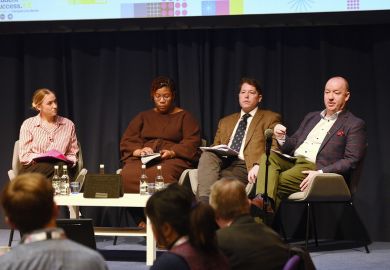The earnings boost provided by higher education has held firm in the face of an influx of graduates entering Australia’s labour market, according to a major study.
But vocational credentials, on average, give people only a marginal pay advantage over those with no tertiary qualifications. And for women, they may even be a drawback.
The study, led by former University of Canberra vice-chancellor Stephen Parker, suggests that the “wage premium” from higher education is solid and lifelong. Degree-qualified men can expect to earn around 20 per cent more than men with only high school qualifications, while women reap a premium of about 15 per cent.
“Knowledge economy-style jobs are expanding sufficiently to take up the increasing numbers of graduates,” said Professor Parker, education leader at KPMG Australia. “One would have thought that maybe there was an oversupply, but the data don’t show that. Maybe they will in the future, but they don’t at the moment.”
A September report by the Grattan Institute thinktank concluded that the graduate premium was narrowing, as growth in Australia’s professional jobs failed to keep pace with graduate numbers. And the 2018 Graduate Outcomes Survey, released in October, suggested that new graduates were taking longer to realise career benefits from their studies than their counterparts a decade ago.
But these findings were largely based on comparisons of the experiences of recent higher education graduates, as well as census data. Professor Parker said that the source for his study, the Household Income and Labour Dynamics in Australia survey, gave a “more stable” picture by tracking the same cohort of people.
This meant that the findings were less affected by fluctuating economic and labour market conditions. It also allowed the study to look at the career outcomes for vocational graduates and people who had not completed school.
When the researchers controlled statistically for non-educational factors that could impact on earnings – including ethnicity, marital status, location, parental occupation and family background – there was no significant change to the findings.
Nor were they changed when the researchers looked at the female graduate premium in hourly wage rather than salary terms, to allow for women’s higher rate of part-time work.
“Women with degrees do better than women without degrees, but not as well as men with degrees, despite three decades of female students outnumbering male students in universities,” the report says.
Professor Parker said that the marginal wage premium from vocational qualifications raised long-term economic questions. He said that Australia had chronic shortages of skills normally provided through vocational education, and “rising resistance” to migration would make it difficult to import those skills.
“If the so-called fourth industrial revolution arrives quickly and calls for new mixes of knowledge and skills, Australia risks being caught flat-footed,” he said.
Register to continue
Why register?
- Registration is free and only takes a moment
- Once registered, you can read 3 articles a month
- Sign up for our newsletter
Subscribe
Or subscribe for unlimited access to:
- Unlimited access to news, views, insights & reviews
- Digital editions
- Digital access to THE’s university and college rankings analysis
Already registered or a current subscriber?








